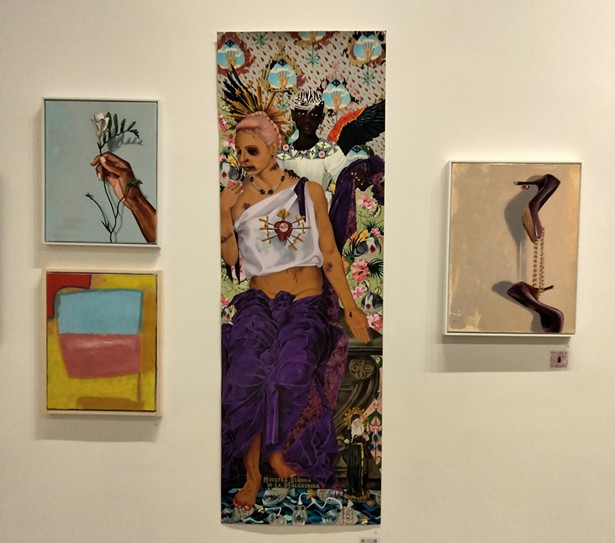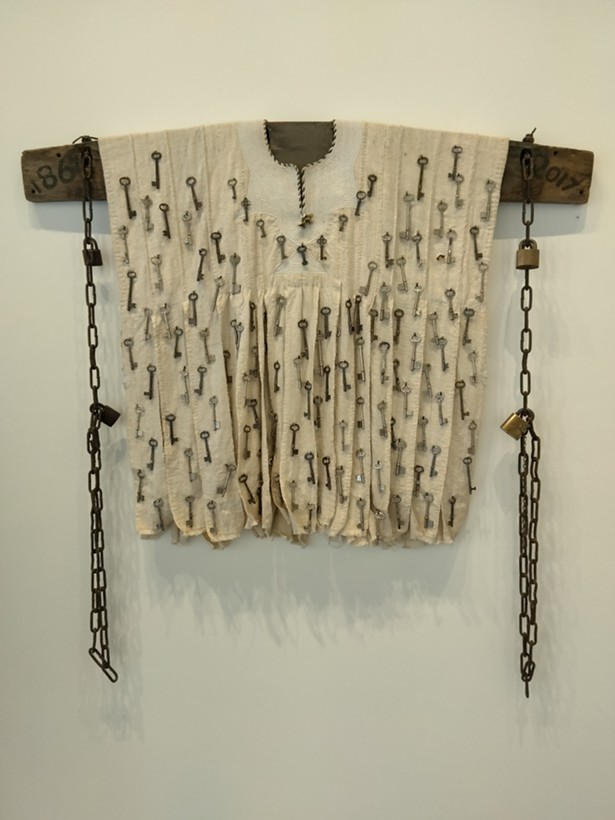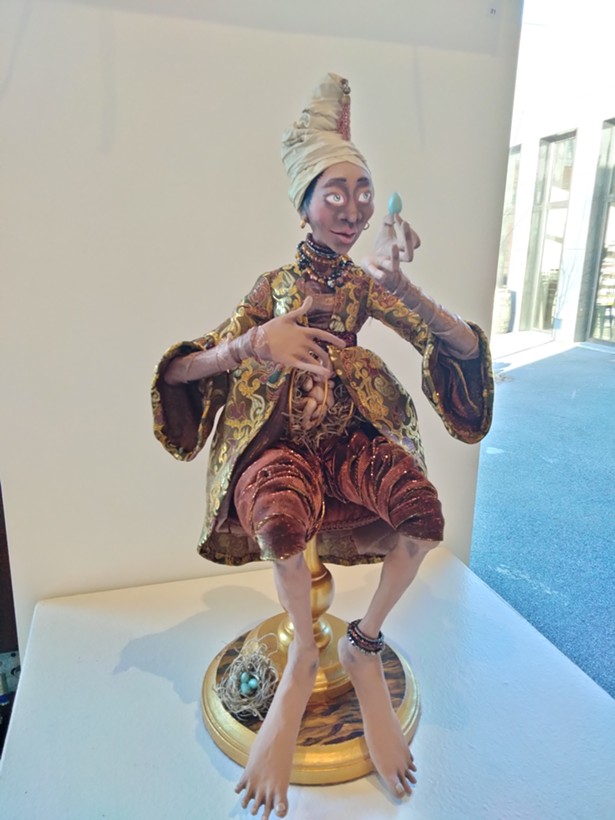
A year in the making, the exhibition “‘Cause We Be Complicated: Dialogues of Black Artists” brings together 15 artists from Africa, Atlanta, Washington DC, Manhattan, Brooklyn, Rhinebeck, Hudson, and Newburgh. Two women curators Jonette O'Kelley Miller and Karen Gersch, one black, one white, have collaborated to mount the group show at ADS Gallery in Newburgh. Both women bring extensive experience in performance, teaching, and art making to their work.
At the door to the gallery is a six-minute section of a work in progress, a documentary film entitled ”Blueprint for My People,” by Carol Bash. Powerful archival footage is rendered in montages of historic cyanotype photographs underscored with a spare but emotionally evocative soundtrack by Tony Jefferson and searing poetry by Margaret Walker read by Poet Gold. The film depicts black people living their lives in the racist reality of America. A fitting first encounter for the whole, O’Kelley Miller regards this film’s footage—and the exhibition as a whole—as a way “to show where we have come from, our resilience, and to say that there's still hope.”
“‘Cause We Be Complicated” is an installation of 35 works expressing a range of individuated responses to the complex reality of being creative artists of color in the 21st century. Whether representational or abstract, painted, collaged, sculpted, photographed, or filmed, each work offers its own distinct visual language to navigate, interrogate, reflect on the artist’s experience.
“Hands Up,” a collage by DC artist Paula Mans is a small but striking image of a black person’s face staring out at the observer. The artist's goal is “to subvert notions of power through the Gaze.” Her work is meant to “look defiantly out onto the world—engaging, confronting, and challenging the viewer.” Another of her collages, a larger one entitled “Thunder is a Woman with Braided Hair” brackets the gallery from the other end of the room thereby creating a context with which to approach the work of other artists in the enclosed space.
Not every artist is so direct, though Gerardo Castro’s work is equally intense. His ”Our Lady of the Unloved Woman” is a visual scream of protest against violence to women rendered all the more effective through his highly disciplined artistic skills which eschew expressionist brush work in favor of compositional tensions, masterful figure painting, and brilliant color choices.
Two diminutive multimedia works located nearby offered up by Ransome from his Lynch Box series keep outrage at an intense level. One of these, Laura Nelson and Family, composed of wood, nails, collage, acrylic paints, change purse, and a dollar bill memorializes the lynching of a black woman and her 14-year-old son.
Some works are more understated. Although the lipstick Melissa Small Cooper pictures in her oil painting Embrace Euphoria is a deep red, the composition is relatively spare and its narrative is suggestive rather than declamatory. Hand-scrawled text fills one corner of the painting. Our minds are allowed to fill in the blanks. “We do have our masks that we wear and our make-up does help us to have a sense of protection,” says O’Kelley Miller. Ted Dixon takes narrative restraint further offering elegant abstract paintings, employing a carefully nuanced palette. One might wonder about his titles though: Quotation #2 and Quotation #3. Who is he quoting, what is he quoting, why?
Stevenson Estime’s In America, rendered with an Apple pencil and digital collage techniques, quotes Looney Tunes and Walt Disney as well as other image sources. According to Gersch, in his childhood the artist wondered why Daffy Duck—who in the foreground of the picture holds up ice cream cones the flavors of which reference our racial schism—“was always getting beat up while Bugs Bunny always escaped physical abuse.” An electric chair framed by twinned Tinkerbells in the background extrapolates this double standard to its real-world adult extreme.
Hope is supplied by the accomplished doll artist Lillian Alberti in her work entitled The Bledsoe Sisters: Pansy, Grace & Sue. Three beautifully dressed singers, each in a different outfit designed and sewn by the artist, raise their voices in what appears to be jubilation. The viewer is invited to gently turn the small sculptural piece to take in each singer one at a time. Each singer’s likeness suggests a unique identity through clothing style, gesture, and facial expression, actualizing the curators’ goal to express through the variety of the art on view that, in the words of O’Kelley Miller, “in this day and age and in this society, just like all humanity we’re multidimensional, we’re not just the other or one single stereotype.”













